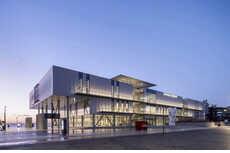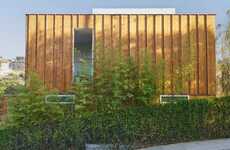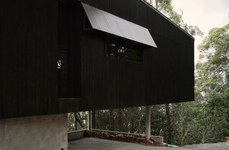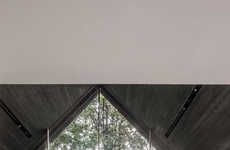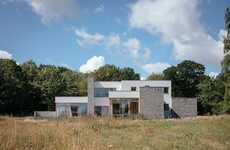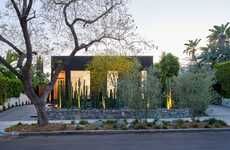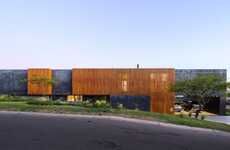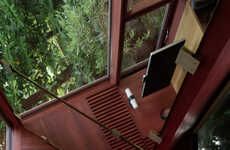
Bornstein Lyckefors Debuts a Timber-Clad Villa in Sweden
Kalin Ned — August 15, 2022 — Art & Design
References: dezeen & bornsteinlyckefors.se
This timber-clad villa exudes elegance and contemporary sensibilities. The structure, which has a bold geometric-forward influence, occupies a plot in Gothenburg, Sweden.
The timber-clad villa was designed by architecture studio Bornstein Lyckefors and it is officially named Villa Hovås. The building has a blackened facade, which contributes a sense of mystery and the aforementioned elegance by delivering "a monolithic and sculpted presence." The floor plan spans two levels. The facade is also interrupted by large openings that the architects strategically implemented in order to maximize the views of the outdoors. Bornstein Lyckefors aimed to "create varying relationships to light and views of nature throughout the home" and to provide residents with breathtaking views of the nearby seascape, as well as the beautiful sunsets.
Image Credit: Erik Lefvander
The timber-clad villa was designed by architecture studio Bornstein Lyckefors and it is officially named Villa Hovås. The building has a blackened facade, which contributes a sense of mystery and the aforementioned elegance by delivering "a monolithic and sculpted presence." The floor plan spans two levels. The facade is also interrupted by large openings that the architects strategically implemented in order to maximize the views of the outdoors. Bornstein Lyckefors aimed to "create varying relationships to light and views of nature throughout the home" and to provide residents with breathtaking views of the nearby seascape, as well as the beautiful sunsets.
Image Credit: Erik Lefvander
Trend Themes
1. Timber-clad Architecture - The use of timber as a primary material in architectural designs creates innovative opportunities for sustainable living.
2. Geo-inspired Facades - The use of geometric-forward design in facades presents opportunities to visually enhance spaces and create unique brand identities.
3. Maximized Views - Architects can leverage large openings to build homes that create varying relationships to light and views of nature, taking advantage of the surrounding environment.
Industry Implications
1. Architecture - Architects can leverage timber as a material in their designs to create cost-effective, sustainable homes and structures.
2. Real Estate - Incorporating unique facade designs and maximizing views can attract buyers and tenants looking for modern, visually pleasing spaces.
3. Construction - As timber is a more renewable and sustainable material, construction companies can explore its use in building structures that are both cost-effective and environmentally friendly.
4.6
Score
Popularity
Activity
Freshness



